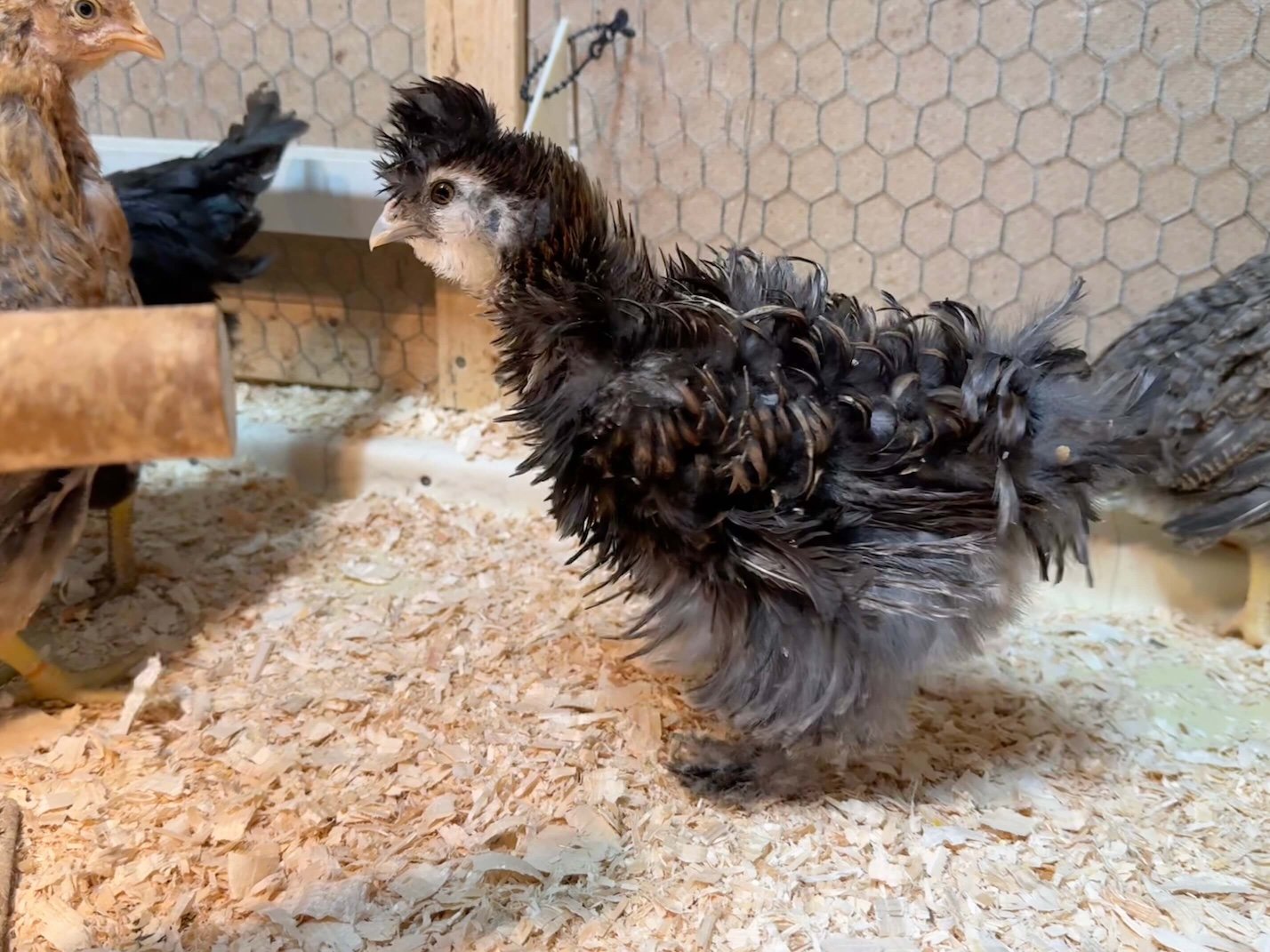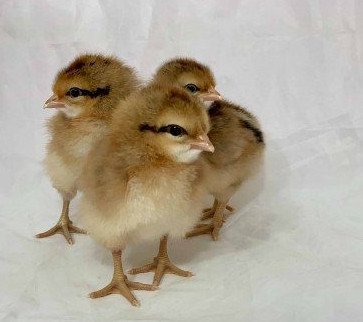Silkie Juvenile
Origin: China / Japan
Size: 2-2.5 lbs
Comb: Walnut, bearded & non-bearded
Egg Size & Color: Small - White / Tan
Egg Production: ~120 per year
Hardiness: Hotter temps - heat required in the winter
Purpose: Ornamental / Pet
Personality: Docile, friendly
Free Range: No
All chickens are Marek’s vaccinated for a healthy start
Starter Pullets take 2-3 months from the time you place your order to be ready. We do not have stock available for immediate fulfillment!
Origin: China / Japan
Size: 2-2.5 lbs
Comb: Walnut, bearded & non-bearded
Egg Size & Color: Small - White / Tan
Egg Production: ~120 per year
Hardiness: Hotter temps - heat required in the winter
Purpose: Ornamental / Pet
Personality: Docile, friendly
Free Range: No
All chickens are Marek’s vaccinated for a healthy start
Starter Pullets take 2-3 months from the time you place your order to be ready. We do not have stock available for immediate fulfillment!
Origin: China / Japan
Size: 2-2.5 lbs
Comb: Walnut, bearded & non-bearded
Egg Size & Color: Small - White / Tan
Egg Production: ~120 per year
Hardiness: Hotter temps - heat required in the winter
Purpose: Ornamental / Pet
Personality: Docile, friendly
Free Range: No
All chickens are Marek’s vaccinated for a healthy start
Starter Pullets take 2-3 months from the time you place your order to be ready. We do not have stock available for immediate fulfillment!
-
Silkies are crested and have a walnut comb, generally black to mulberry skin, legs, and toes. They also have five toes instead of four, with very feathered legs! We have several different color patterns here on the farm, and our focus is on them being super fluffy and multi-colored this season, so all color variations are together. Depending on timing and orders, special requests on coloring can be accommodated but never guaranteed. Silkies can’t fly and may or may not perch so giving them low roosting options is a must.
Our silkies comprise of 4 types of feather patterns: Silkie, Frizzled Silkies, Satins and Frizzled Satins. When ordering you will get any of these varieties:
Cuckoo
Paint
Chocolate
Mauve
Cuckoo-Mauve
Black and White Laced
Many other colors!
White
Gray
Black
Splash
Blue
Partridge
Lavender
Creole
-
Silkies are Significantly hard to determine between males and females. Many times they act and behave like the other. Some say you can’t sex a silkie until they crow or lay an egg; I have been fooled several times. At our farm, we don't predict their gender to avoid disappointment. If you end up with a male Silkie, many people would be happy to have it for their flock.
In many cases, even male Silkies can show maternal instincts and be gentle with chicks. They call the chicks over when they find food and spend time with them once they can explore independently. At Sugar Feather Farm, our Silkies, both male and female, usually coexist peacefully. It's important to note that Silkies are calm birds and usually aren't dominant in the flock. Our Silkies are vaccinated for Marek’s Disease as they are more prone to it.
Silkie is considered a bantam chicken (smaller fowl) with 5 toes. Because of their gentle and docile nature, they make wonderful pets and adapt quickly to attention and handling by people. Their tendencies towards broodiness (“Broody” means when a hen is wanting to sit on eggs and have babies) are amazing and Silkie hens will hatch and raise almost any kind of poultry or fowl. You can expect 4 white to cream colored eggs that are small to medium in size (75% the size of a large chicken egg) when not broody but laying can vary.
They need your TLC! Adorable and fluffy from hatch to old age, silkies enjoy the rain and chilly climates, staying warm with their downy layers. They need space in the winter but can handle the heat with ample water. Thriving in Vermont winters, their leg care and parasite checks need attention.
-
The date and place of origin of the Silkies are not known, however, Marco Polo wrote of the fur-covered fowl with black skin during his journeys to China in the 13th century… hmmm. It is safe to assume that Silkies had been around quite a while before Marco Polo. The Silkie of that time and the modern Silkie do not resemble each other in many other respects, being that the ancient Silkies evidently did not have leg feathering or any crest to speak of. As a matter of fact, the Silkie seen in the showroom today has changed considerably in the last 30 to 40 years. Their crests are larger and the feathering down the legs is more abundant than seen previously. Also a larger variety of colors are found today. The original Silkies were white only, today there are several color patterns. Bearded and non bearded varieties.
-
We recommend starting baby chicks out with Sugar Feather Farm chick starter for the first 6 weeks, then switch to our Chicken Grower. However, Silkies tend to need more nutrition longer so we recommend using the chick starter 8 weeks. Use the Grower Feed until they hit maturation (which is when they start to lay) then switch to Sugar Feather Farm Adult Feed.
We highly recommend using the Oil of Oregano in their water daily as a supplement to aid with digestion and overall health.


































































